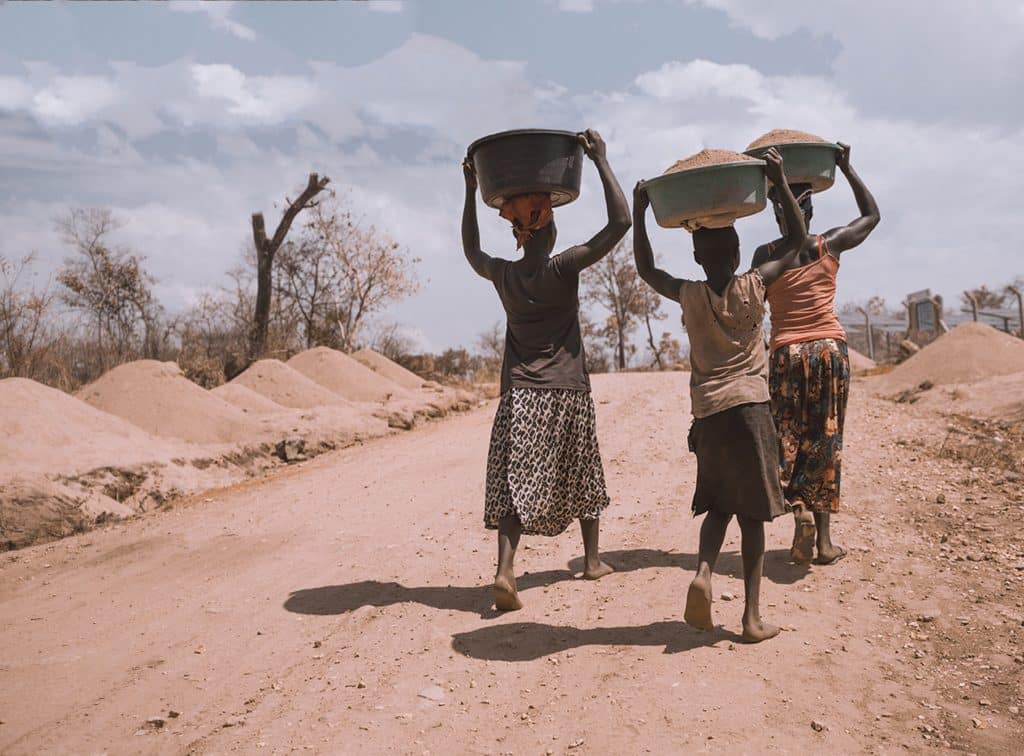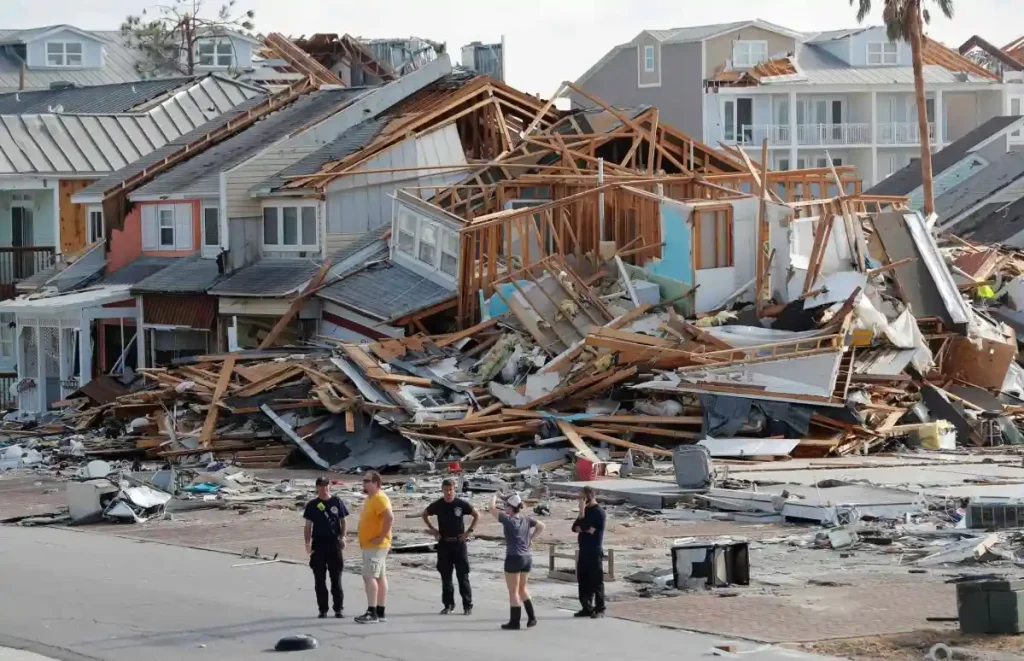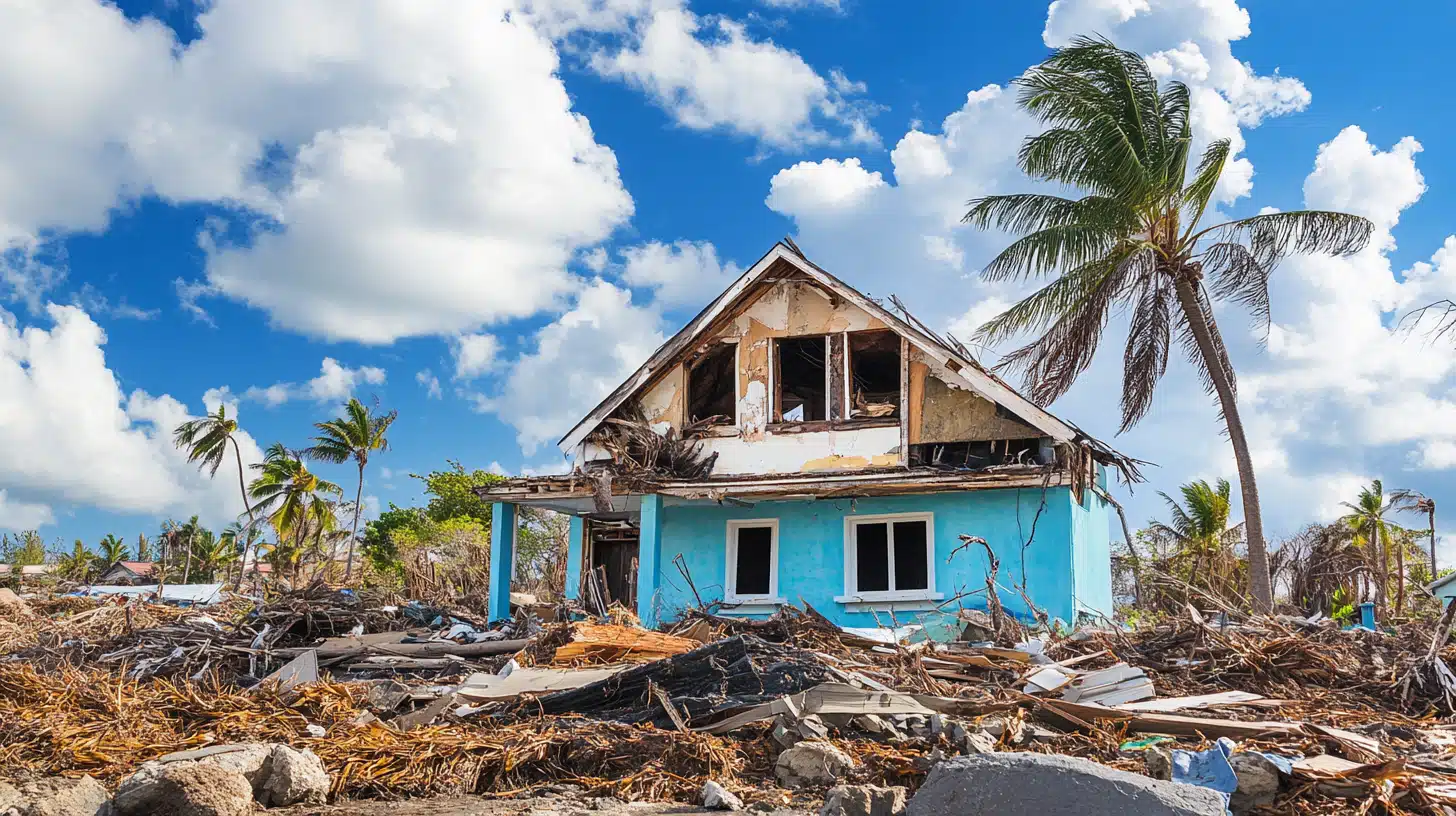From the recent devastation of Hurricane Helene in the Southeastern U.S. to the heavy rain and flash floods that continue to rage across Pakistan and Afghanistan, climate disasters can have a lasting impact on communities everywhere.
Storms can cause road closures, shutter businesses, destroy vital infrastructure, overwhelm first response agencies and healthcare systems, and displace entire communities. In the past year, over 568,100 folks worldwide were left homeless due to extreme weather.
Let’s examine the connection between climate disasters and community displacement and discuss how to collaborate to recover in the aftermath.
The Scope of Climate Displacement

Hurricanes, tornadoes, monsoons, and other extreme weather systems can bring powerful winds, heavy rains, and intense storm surges. When these conditions make landfall, local communities often must evacuate without much notice, disrupting their jobs, routines, and lifestyles. For some, this isn’t just a temporary inconvenience—it leads to long-term instability.
Those who live in ecologically sensitive places, such as rural mountains and coastal regions, or low-income areas are especially vulnerable to this threat. The World Economic Forum reports that Indigenous communities—who suffer 2–3 times more poverty than the worldwide average—are seven times more likely to face climate displacement.
But no one is safe from the escalation of climate disasters that we’ll continue to experience in the coming years. Take storms, for example. These severe weather patterns are known by different names in various parts of the world, but they can be catastrophic to all communities’ social, economic, and environmental well-being.
Whether it’s a hurricane in the Atlantic Ocean, a tropical cyclone in the Indian Ocean, or a typhoon in the Northwest Pacific, these storms frequently impact homes, businesses, schools, and public services long after the skies clear.
Social Impacts
When severe weather forces an entire community to evacuate, the social networks within that region can start to unravel. Neighbors lose touch with one another, business owners halt their operations, and teachers no longer have students in their classrooms. Meanwhile, healthcare workers and first responders must navigate a public safety crisis.
This erosion of a community’s once-shared sense of identity can occur due to various factors over time. As the displacement persists, many former residents will permanently scatter and relocate to different areas, exacerbating this social upheaval.
The loss of connection is one reason why mental health issues such as depression, anxiety, loneliness, and post-traumatic stress often increase in the aftermath of a climate disaster.
Economic Impacts
Within the first six months of 2024, climate disasters cost the global economy over $40 billion in infrastructure damage. That’s a severe loss, but marginalized communities will feel most of this economic impact.
While those in wealthier areas often recover from extreme weather due to financial buffers, insurance coverage, and temporary relocation, those without the same access to resources could face interminable displacement.
Local economies are also vulnerable to the threat of severe weather. In fact, 40 percent of small businesses are harmed by a climate disaster shutter within a year. These closures can displace working-class families, which has a trickle-down effect on local and regional industries.
When a decrease in business is coupled with infrastructure problems and significant service interruptions, the economic impact can be devastating. Even with temporary aid from shelters or relief agencies, complete recovery often takes several years.
This can worsen financial disparities and make communities more susceptible to future economic challenges in the event of more climate-related disasters.
Environmental Impacts
Every year, the U.N. Refugee Agency reports 24 million climate evacuations, with about 50 percent caused by heavy rain and flash floods. This extreme weather forces entire families to leave their homes, which can also impact natural ecosystems due to large-scale human migrations and quickly built shelter areas.
Wetlands, forests, and coastal regions are often cleared to accommodate those who fled their communities. While this might be necessary in the short-term, it can have lasting consequences for important, delicate biodiversity.
Additionally, waste generated from relief operations can lead to environmental pollution due to toxins in medical supplies, housing materials, or food packages. Severe weather alone can also release chemicals, sewage, or debris into the water, soil, and atmosphere, contaminating natural resources and harming local wildlife.
Post-Storm Recovery: Rebuilding Families and Communities

Despite the devastating impact of climate-related displacement, human beings are resilient, and many communities can recover.
Sustainable recovery goes beyond just rebuilding infrastructure; it also means restoring the social cohesion that holds a community together. While immediate emergency efforts are crucial, achieving long-term stability requires continual persistence, cooperation, and equitable access to local resources.
Once essentials like water, electricity, shelter, education, and healthcare are restored, communities can focus on other services to support their overall well-being. For example, trauma-informed counseling can address mental health concerns, while enrichment and recreational programs will foster social connections and establish a sense of normalcy.
Investing in small business operations is essential to revitalizing the economy. This will create more employment opportunities and stimulate revenue for the community. Both federal and local relief organizations must also ensure that folks in low-income areas receive the necessary financial assistance to recover their losses.
Take Action Now for a Climate Resilient Future
The final step of restoration is to future-proof against climate displacement. On a larger scale, this involves implementing more robust infrastructure codes, building more resilient flood barriers, and developing effective climate adaptation strategies.
On a smaller scale, it consists of creating a family evacuation plan, obtaining comprehensive storm insurance, and staying informed about local weather. These initiatives will provide security even in the face of looming climate-related disasters.

